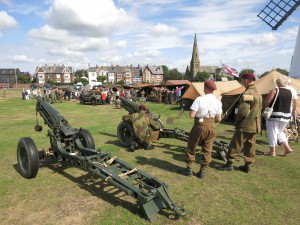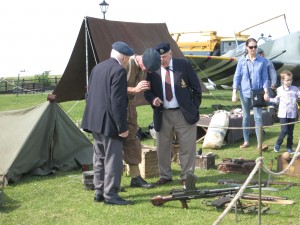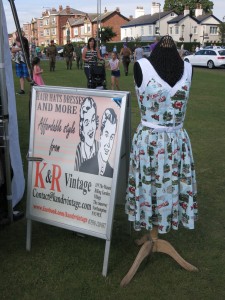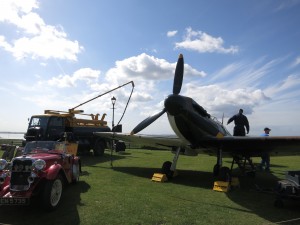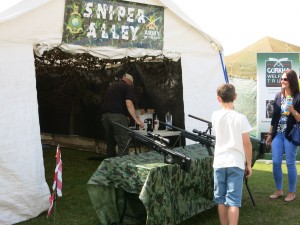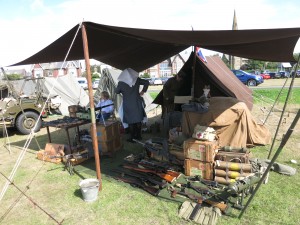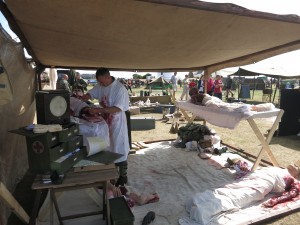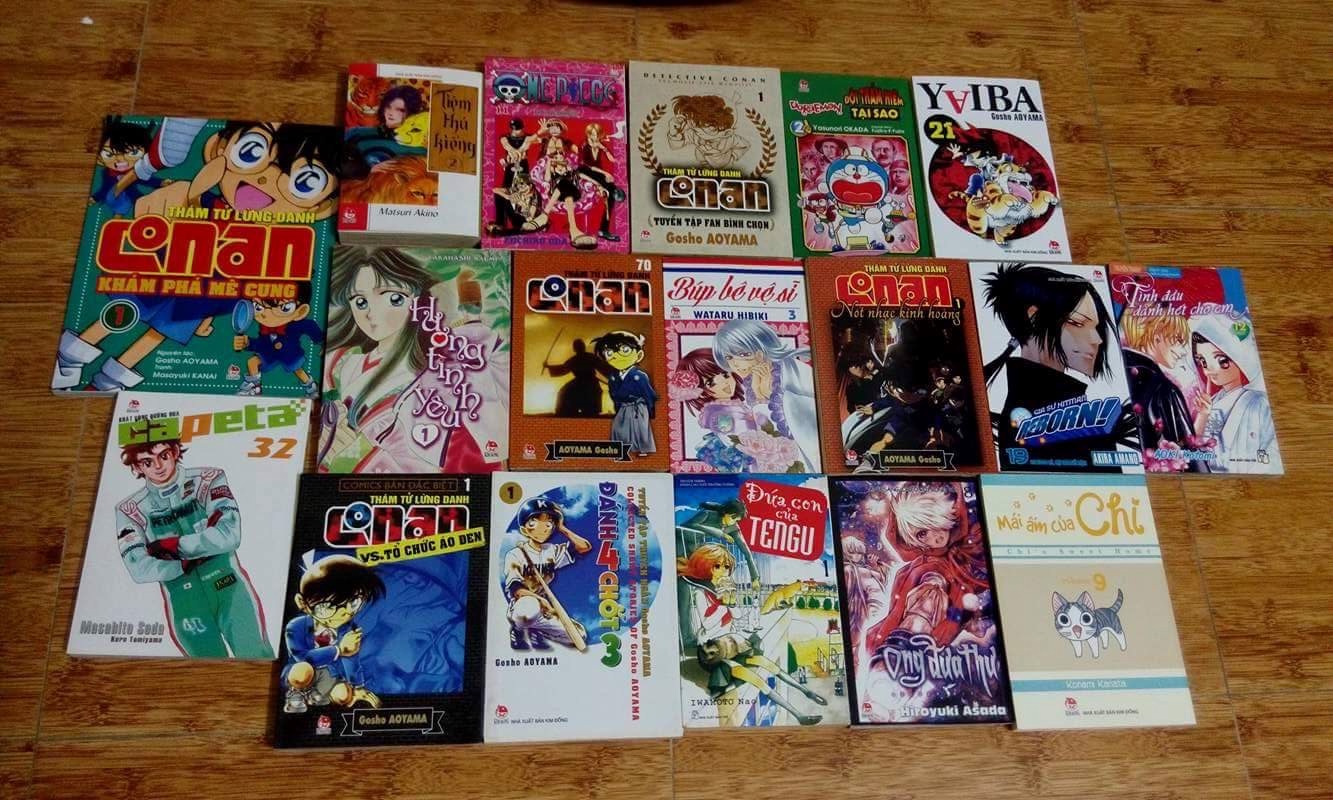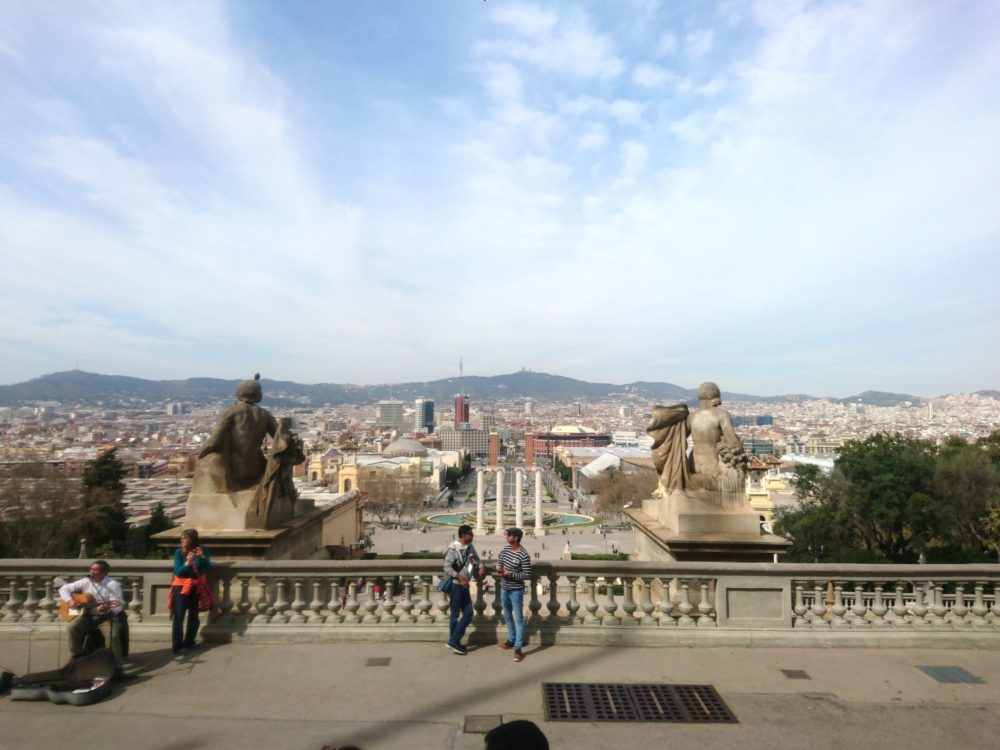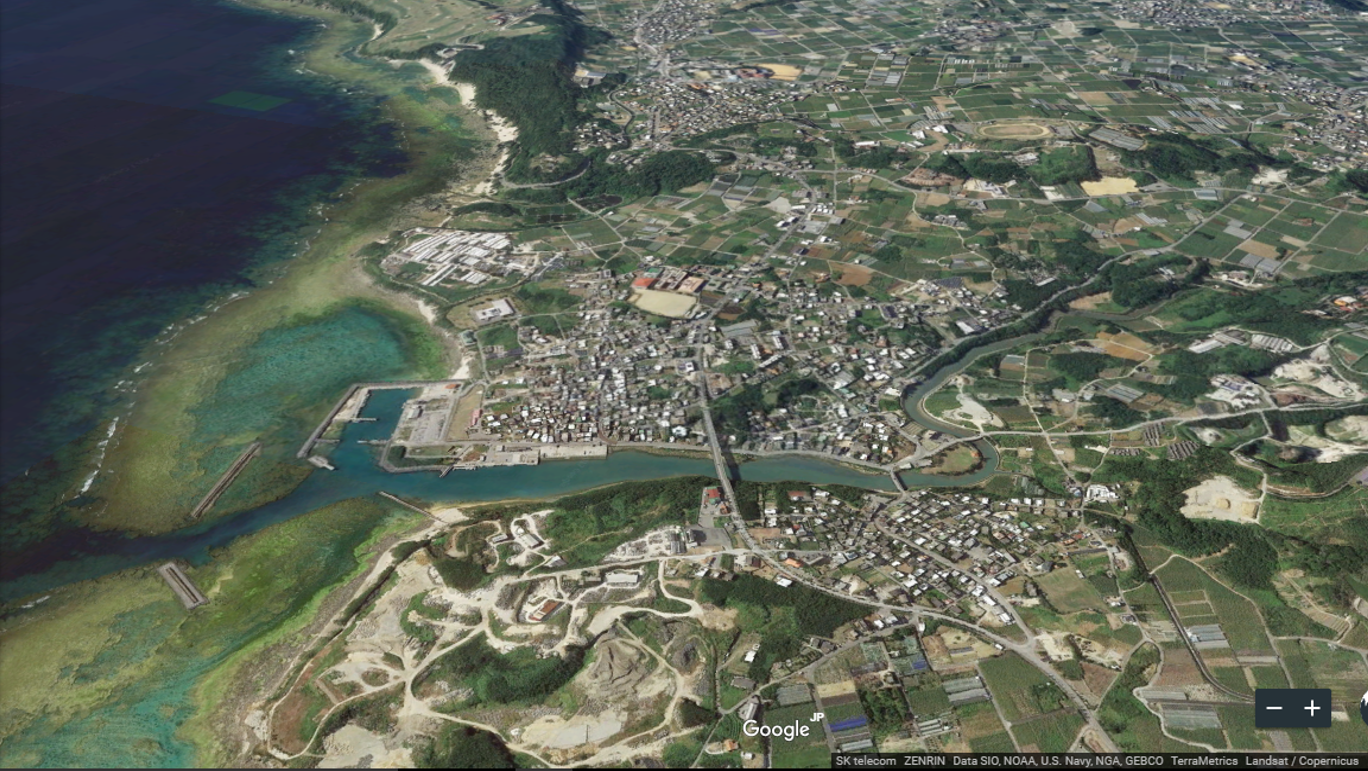영국 블로그 제2차 세계대전에 대한 생각(3) Blog from UK Understanding toward the WW2(3)
원문: 일본어
원문 게시일: 2015년 8월 26일
번역자: rion
8월 16일, 날씨가 어제보다 좋아져 기분 좋은 오후, 리담의 1940년대 전쟁을 테마로 한 페스티벌에 들렀다.
On the 16th of Aug, the weather improved and I popped in the Lytham 1940s War Time Festival.
어제 만난 폴의 설명에 따르면, 전투를 재현하는 장소와 ‘영리 목적’ 구역이 구별되어 있다고 하였다. 1940년대를 테마로 한 ‘영리 목적’ 구역은 어떤 곳일까. 먼저 회장 전체의 부스들을 대강 둘러보았다. 부스들은 당시 유행했던 여성용 드레스, 장식된 모자와 액세서리를 팔거나, 병사의 군복과 헬멧까지 있었다. 큰 부스에서는 당시 유행했던 음악까지 흐르고 있었다. 이 구역은 그야말로 축제같구나. 방문자들이 즐길 수 있는 분위기이다.
Paul indicated that battle re-enactment field was divided from the commercial area. What is commercial area in terms of 1940s? First, I walked along glancing the whole stalls and tents; they were selling fashionable dresses, fancy hats and accessaries in 1940s, so as soldier’s uniforms, helmets, etc. The music in the war time perhaps was played in the large tent, too. Ok, all these markets looked very familiar as a festival. Somthing people can have fun.
같은 장소의 반대편에는 전쟁 당시의 비행기와 지프차 등 오래된 탈것들이 전시되어 있었다. 그리고 아이들이 사격게임을 할 수 있는 부스들도 있었다.
In the opposite side of the area, I saw series of war time airplanes and jeeps, old fashioned vehicles. Also, at some tents, children were able to shoot the target.
계속 걸어 영리 목적 구역의 반대편에 도착하자, 이번에는 같은 탈것이라도 클래식카들이 전시되어 있고, 각 차의 주인들이 차 뒷편에서 피크닉을 즐기고 있었다. 물론 1940년대 패션을 하고서. 모인 사람들은 모두 유유자적한 분위기로, 차 주인들은 어딘가 모르게 우쭐해하는 표정이었다.
Walking on, the other end of the commercial area, there were vintage cars displayed, owners were having a picnic behind their cars, of course, dressed in 1940s fashion. They all looked relaxed and proud of their cars.
그 다음 구역으로 들어갔다. 폴이 전투를 재현하는 장소라고 말해주었던 곳이다. 이 지역의 심볼인 풍차 근처로 다가가자 그곳에도 부스가 줄지어 있었다.
Then, next area, where Paul mentioned the field for battle re-enactment. Nearer the windmill, the symbol of this town, there were flows of tents set up.
부스에 무엇이 전시되어 있는지 살펴보니, 옛날 무기, 총이나 방독면, 전쟁터에 있을 법한 당시의 온갖 물건들이 있었다. 그리고 물론 군복을 입고 있는 사람들이 많이 있었는데, 그 뿐만 아니라 간호사나 의사들의 모습도 보였다. 전투가 끝나고, 물론 그곳에는 부상당한 병사들을 치료하는 의료 종사자들도 있었을 것이다.
Looking closely what they displayed at the tents; old weapons, guns and gas masks, all sorts of what they should have had in the battle field. Then, there were people dressed in soldiers obviously, and nurses and doctors as well. After the battle, of course, there were medical people who helped wounded soldiers.
부상을 당하여 피투성이인 병사들, 빨간 잉크로 물든 인형이긴 했지만. 살아있는 의사는 필사적으로 바늘과 실을 이용해 인형의 몸을 꿰매고 있었다. 이 부스 앞에서 초등학생 정도의 아이들이 발걸음을 멈추고 의사가 무엇을 하는지 열심히 바라보고 있었다. 나도 이 의사의 손놀림을 보고 있었는데, 빨간 잉크로 물든 인형이라는 것을 알면서도 왠지 흠뻑 젖어 말없이 누워있는 인형을 동정할 수밖에 없었다.
The wounded soldiers with blood all over, in other words, dolls with heavily poured red ink. The living doctor was seriously stitching parts of these doll’s body. At this tent, young children stopped and intensely gazed at what the doctor was doing. Certainly I stopped and watched at him, and the dolls, even sympasized them with flooded red ink, wet and speechlessly lying down.
그렇구나, 전투를 재현한다는 것은 전쟁과 관련된 모든 문제에 대해 다룬다는 뜻이기도 하구나. 전쟁터에서 벌어지는 전투 뿐만아니라, 전투 후 병사들이 겪게되는 그 모든 일에 대해. 이 부스에서 걸음을 떼었을 때, 그 다음으로 눈에 들어온 것은 전쟁터 위에 늘어선 무덤들이었다.
So, the battle re-enactment may bring the whole issue of the war. Not only fighting at the battle, then what happened to the soldiers as well. When I walked away from the tent, the next thing I saw was the rows of graves in the battle field.
